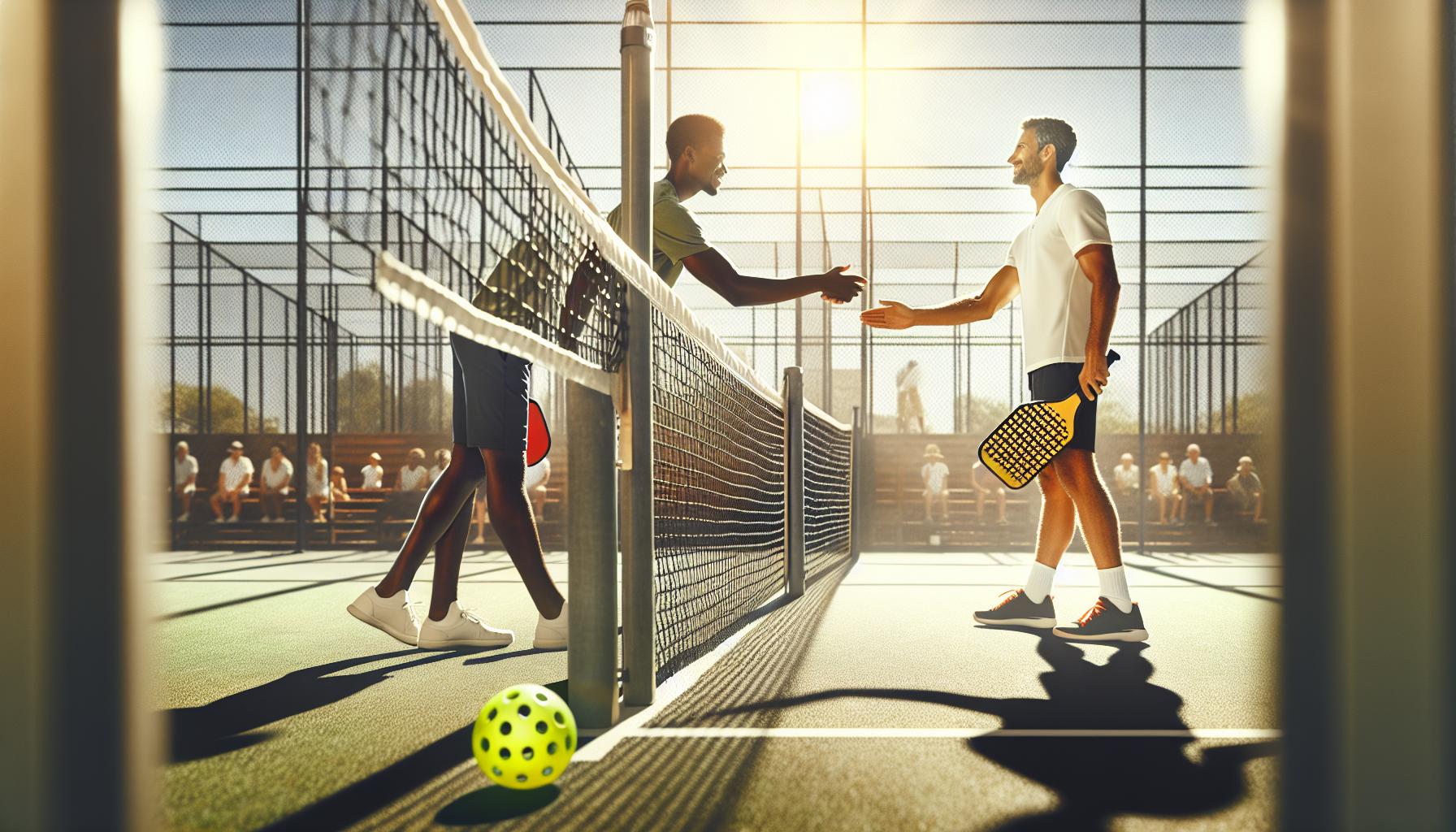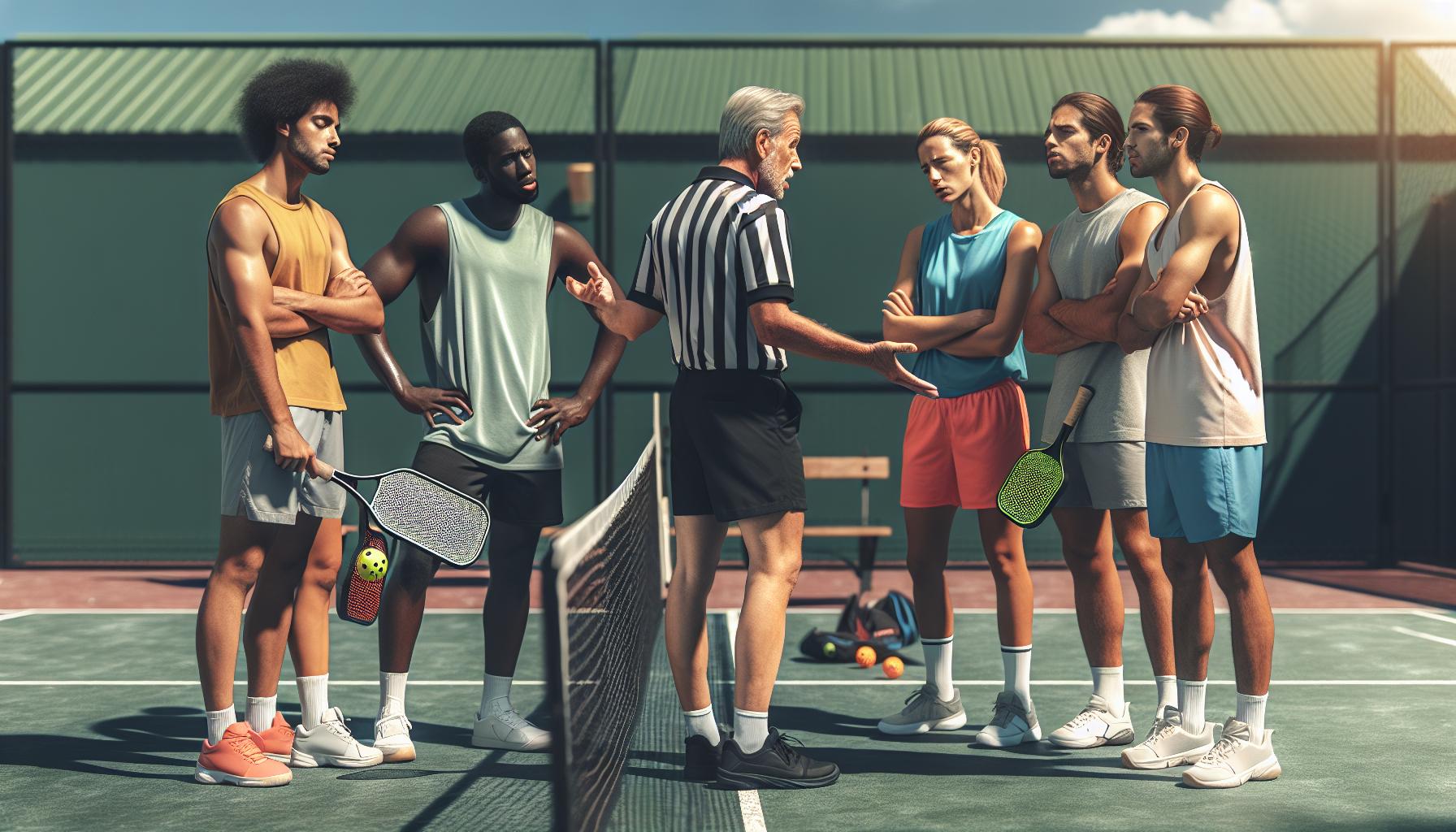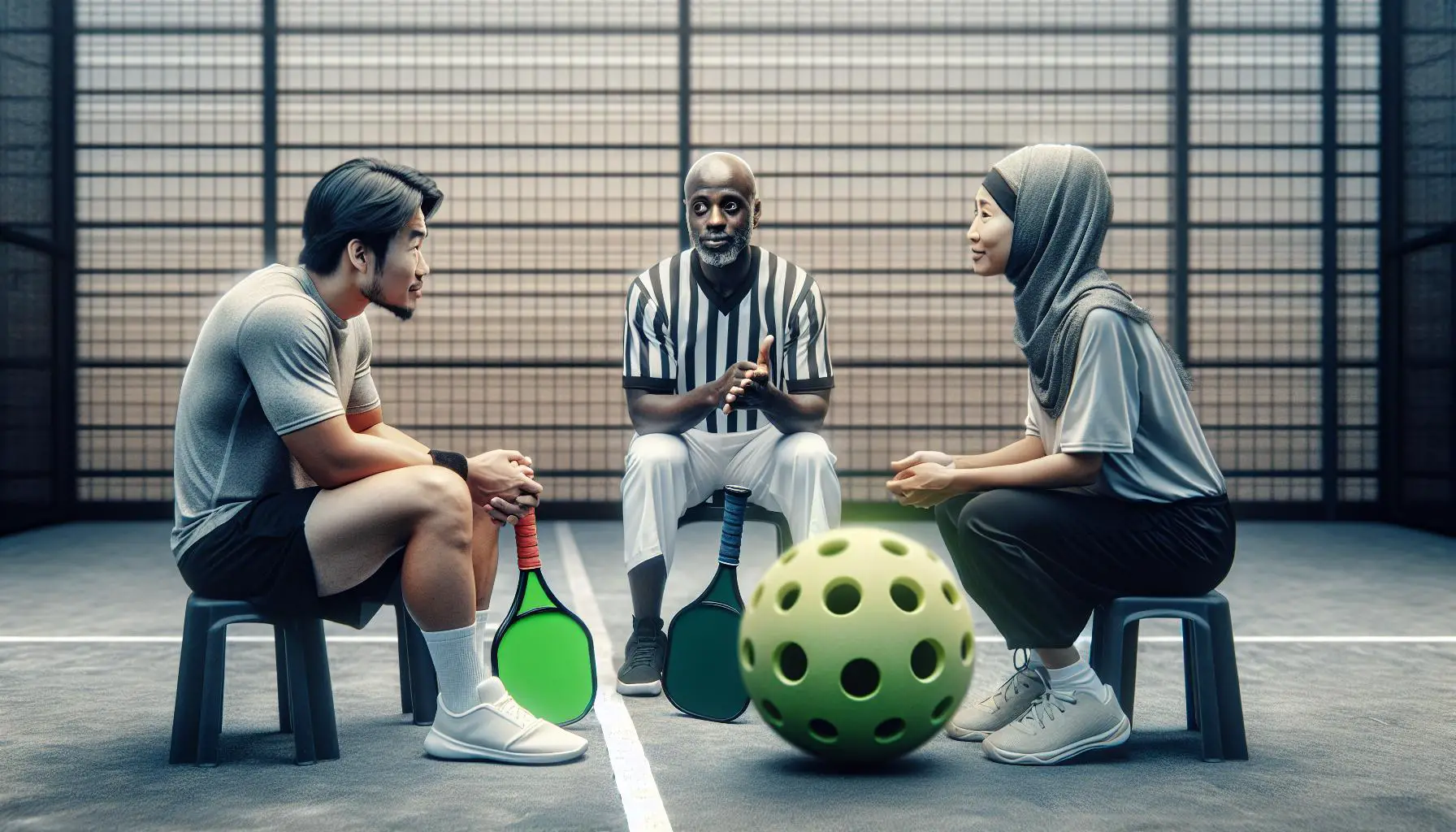Pickleball’s popularity is soaring, and as more people join in, understanding the nuances of its rules becomes crucial. One such aspect that often puzzles players is the provisional ball rule. It’s a rule that can impact the flow and fairness of the game, yet it’s frequently overlooked or misunderstood.
The provisional ball rule in pickleball offers a unique way to handle disputes or uncertainties that might arise during play. Whether you’re a beginner trying to get the hang of the game or a seasoned player aiming to refine your understanding, grasping this rule can significantly enhance your playing experience. Let’s dive into what makes this rule a game-changer and how it can affect your strategy on the court.
What is the Provisional Ball Rule?
In the game of pickleball, understanding the myriad of rules can sometimes feel overwhelming, especially for those new to the sport. However, among these rules, the provisional ball rule stands out as particularly noteworthy for its role in maintaining the game’s integrity and flow. This rule, while seeming complex at first glance, is designed to address disputes or uncertainties that may arise during play without significantly disrupting the game’s pace.
The provisional ball rule allows players to continue a game temporarily when there’s a disagreement on a play or point that can’t immediately be resolved. Typically, this situation involves a ball that might have been out of bounds or a serve that could be considered a fault. Instead of halting the game to debate, players proceed by playing a provisional ball, meaning the point is played out as if two possible outcomes depend on the resolution of the dispute.
Here are a couple of key aspects of implementing the provisional ball rule:
- Immediate Continuation: The game continues without significant interruptions, preserving the flow and reducing potential conflicts among players.
- Resolution Post-Game: The dispute regarding the specific play is resolved after the game concludes, avoiding lengthy mid-game arguments.
This approach not only ensures that the game progresses smoothly but also emphasizes fairness. It acknowledges that not all plays can be judged accurately in real-time without the aid of replays or additional viewpoints.
Application of the provisional ball rule requires agreement among all players involved. It’s a testament to the sportsmanship inherent in pickleball, where the focus is on enjoyment and fair competition. Players are encouraged to communicate openly and decide collectively whether a situation warrants the use of a provisional ball. This collaborative decision-making is a core aspect of the sport’s community-driven ethos.
Understanding and applying the provisional ball rule effectively can significantly enhance a player’s experience on the court. It allows for a seamless game flow even in the face of disputes, ensuring that the spirit of competition remains the central focus. Players of all levels, from beginners to experienced competitors, benefit from familiarizing themselves with this rule. Its correct application not only demonstrates a deep understanding of the game’s regulations but also shows respect for fellow players, reinforcing the inclusive and friendly nature of pickleball.
When Does the Provisional Ball Rule Apply?

In pickleball, the application of the provisional ball rule is not arbitrary but is triggered under specific conditions during a match. These conditions typically revolve around uncertainties that disrupt the natural flow of the game.
One of the primary situations where the provisional ball rule kicks in is when there’s a dispute regarding a call. This could be a disagreement on whether a ball was in or out, or a controversy over a serve being legal. Rather than halting play to debate, players proceed under the assumption that the contested call was both correct and incorrect, playing a provisional point to keep the game moving.
Another scenario that calls for the provisional ball rule is when an external interference occurs. Say a ball from another court rolls in or a player is unsure if a distraction deemed the point unplayable. Rather than stopping the game to argue, players can choose to play a provisional ball to resolve the situation without breaking the match’s rhythm.
Equipment malfunctions also warrant the use of a provisional ball. For instance, if a player’s paddle breaks during a point and it’s unclear whether it affected the play’s outcome, a provisional point might be played to ensure fairness.
These conditions highlight the rule’s flexibility and underscore its primary goal: to maintain the integrity and continuity of the game while ensuring all disputes are resolved fairly. Players must remember, however, that invoking this rule requires mutual agreement. Both sides must concur that the situation warrants a provisional point and what the implications of that point are towards the match’s outcome.
It’s this communal spirit, coupled with a deep respect for the game’s ethics, that truly brings the provisional ball rule into play. By fostering an environment where disputes are seen as opportunities for sportsmanship rather than contention, pickleball maintains its status as a sport beloved for both its competitive and social virtues.
How to Implement the Provisional Ball Rule

Implementing the provisional ball rule in pickleball requires players to follow several key steps to ensure fair play and continuity in the game. This rule primarily comes into effect in situations where a dispute cannot be immediately resolved. Understanding how to properly invoke this rule can greatly improve the flow of the game and uphold sportsmanship among players.
Step-by-Step Guide
- Initiate the Process: The moment a dispute arises, any player can suggest using a provisional ball to avoid delays. It’s crucial that players do this respectfully, signaling a commitment to fair play and the integrity of the game.
- Seek Mutual Agreement: Before proceeding, all players involved must agree to use the provisional ball rule. This consensus is vital for maintaining the spirit of the game and ensuring that the resolution process is acceptable to all parties.
- Replay the Point: Once agreed upon, players should replay the point in question with the provisional ball. The outcome of this replay will temporarily stand as the official result until the dispute is officially resolved according to the rules or until further review can take place.
- Record the Dispute: It’s imperative that players make a mental or written note of the dispute. This includes the score before the disputed play and any relevant details that may assist in a future review. This step is particularly important in tournaments where officials might resolve the dispute later.
- Continue the Game: After replaying the disputed point, the game should continue without interruption. This ensures that the momentum and rhythm of the game are maintained, fostering a positive and competitive environment.
- Clarify Rules Ahead of Time: Players should have a clear understanding of the provisional ball rule before the game starts. This knowledge can prevent confusion and streamline the implementation process if a dispute arises.
- Uphold a Spirit of Fairness: The provisional ball rule’s success hinges on players’ honesty and willingness to maintain fairness. Players should approach disputes with an open mind and a commitment to resolving issues amicably.
- Use in Official Matches: In official pickleball tournaments, the application of the provisional ball rule might slightly differ. Tournament organizers often have specific procedures for handling disputes, so players should be familiar with these guidelines to ensure compliance.
Common Misconceptions about the Provisional Ball Rule

The provisional ball rule in pickleball, despite its clear benefits for the sport, is often misunderstood by players and spectators alike. These misunderstandings may hinder its effective application and can lead to unnecessary disputes on the court. Here, we’ll tackle some of the most common misconceptions to set the record straight and ensure everyone’s on the same page.
Firstly, many assume that the provisional ball rule can be applied at any point during the game. This is not the case. The rule is specifically designed for situations where a call cannot be immediately resolved on the court. It’s not a carte blanche to replay points whenever a player feels like it. The application of this rule requires a certain level of agreement and understanding among all players involved.
Secondly, there’s a belief that invoking the provisional ball rule is a complicated process that will significantly interrupt play. Contrary to this belief, the rule is meant to ensure the smooth continuation of the game while preserving fairness. Once players are accustomed to the process—initiating a respectful request, seeking mutual agreement, replaying the disputed point, and recording the dispute if necessary—the application becomes streamlined and does not cause significant delays.
Another common misconception is that the use of a provisional ball affects the official score of the game. In truth, the provisional ball is used solely for replaying the disputed point. The outcome of this replay does not alter historical scores but instead resolves the immediate dispute, allowing the game to proceed without lingering disagreements.
Furthermore, some players mistakenly believe that the provisional ball rule is only applicable in casual play and not in official tournament settings. This is incorrect. While its application may vary slightly due to the presence of official referees and more stringent rules in tournaments, the core principle remains the same: to resolve disputes fairly and efficiently. Tournament organizers often have specific guidelines on how the provisional ball rule should be implemented, ensuring that its usage is clear to all participants.
Lastly, a subtle yet profound misunderstanding is that the provisional ball rule diminishes the spirit of competition. In reality, the rule enhances the integrity of the game by ensuring that disputes do not overshadow the skill and sportsmanship that pickleball is known for. By providing a structured way to handle controversies, the provisional ball rule keeps the focus on the game, promoting a healthy competitive environment.
Advantages of Understanding the Provisional Ball Rule

Gaining a deep understanding of the provisional ball rule in pickleball offers a plethora of benefits that extend far beyond mere compliance. By acquainting themselves with this rule, players, coaches, and enthusiasts can significantly enhance their gameplay, ensure a fairer play environment, and foster a more enjoyable experience for everyone involved.
Efficient Dispute Resolution stands out as a primary advantage. When players thoroughly comprehend the provisional ball rule, they’re equipped to address and resolve controversies on the court swiftly. This understanding prevents extended interruptions, maintaining the game’s flow and keeping the focus on strategy and skill rather than rule clarification debates.
Equally important is the Promotion of Rule Consistency across games and tournaments. As players and officials develop a uniform understanding of the provisional ball rule, inconsistencies in its application diminish. This uniformity ensures that all matches, whether casual backyard games or high-stakes tournaments, are played under a set of rules that are universally understood and applied, thereby enhancing the integrity of the sport.
Another critical advantage is Enhanced Strategic Play. With a solid grasp of the provisional ball rule, players can make informed decisions about when to invoke it, adding an additional layer of strategy to their game. This strategic depth not only improves individual and team performance but also makes matches more engaging and competitive for players and spectators alike.
The rule also supports Sportsmanship and Fair Play. By ensuring that all disputes can be resolved fairly and efficiently, it fosters an environment of respect among players. They understand that the rule is there to maintain the game’s integrity, not to provide an unfair advantage to any individual or team. This mutual respect contributes to the overall positive atmosphere of the sport, making it more welcoming and enjoyable for players of all levels.
Lastly, an understanding of the provisional ball rule Empowers Players. Knowledge of the rule and its proper application gives players a sense of agency, allowing them to be active participants in ensuring the game is played fairly. This empowerment can lead to a more satisfying playing experience, as players feel confident in their ability to navigate the rules of the game effectively.
By shedding light on these advantages, it becomes evident that the provisional ball rule is a cornerstone of fair play and competitive integrity in pickleball. Its thorough understanding and application not only enhance the experience for players and spectators but also contribute to the sport’s continued growth and popularity.
Conclusion
Grasping the provisional ball rule in pickleball isn’t just about sticking to the regulations. It’s about embracing the spirit of the game. This deeper understanding fosters a more enjoyable and fair environment for everyone involved. Whether you’re a player looking to refine your strategy or a fan appreciating the nuances of the game, this rule plays a crucial role. So next time you’re on the court remember it’s not just a rule it’s a pathway to a better pickleball experience. Let’s all aim to keep the game fair fun and fiercely competitive.














0 Comments